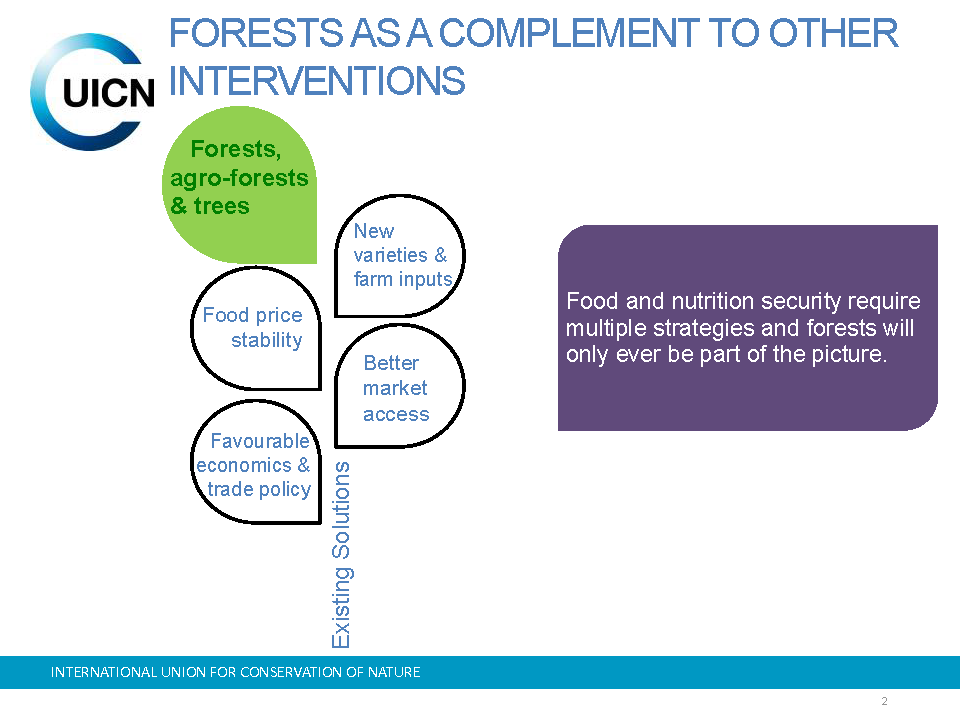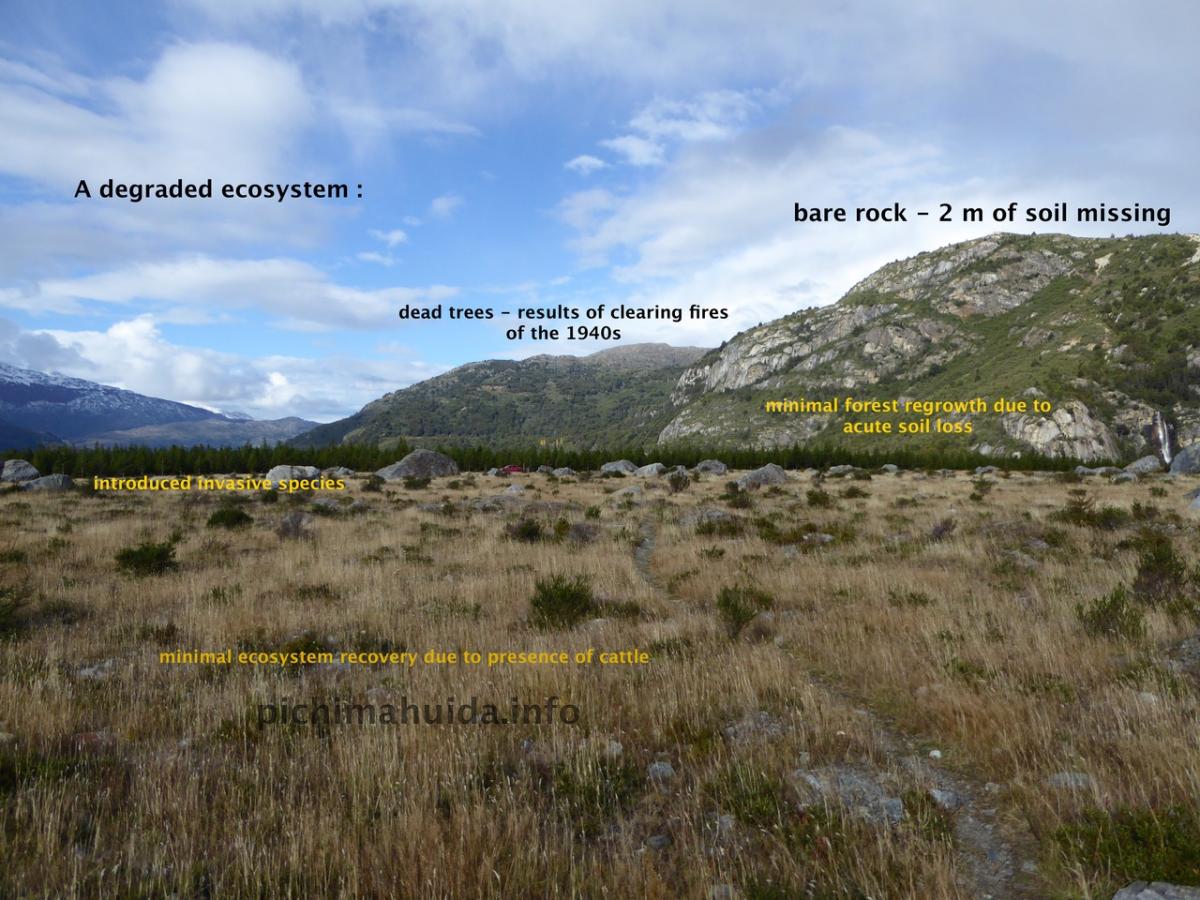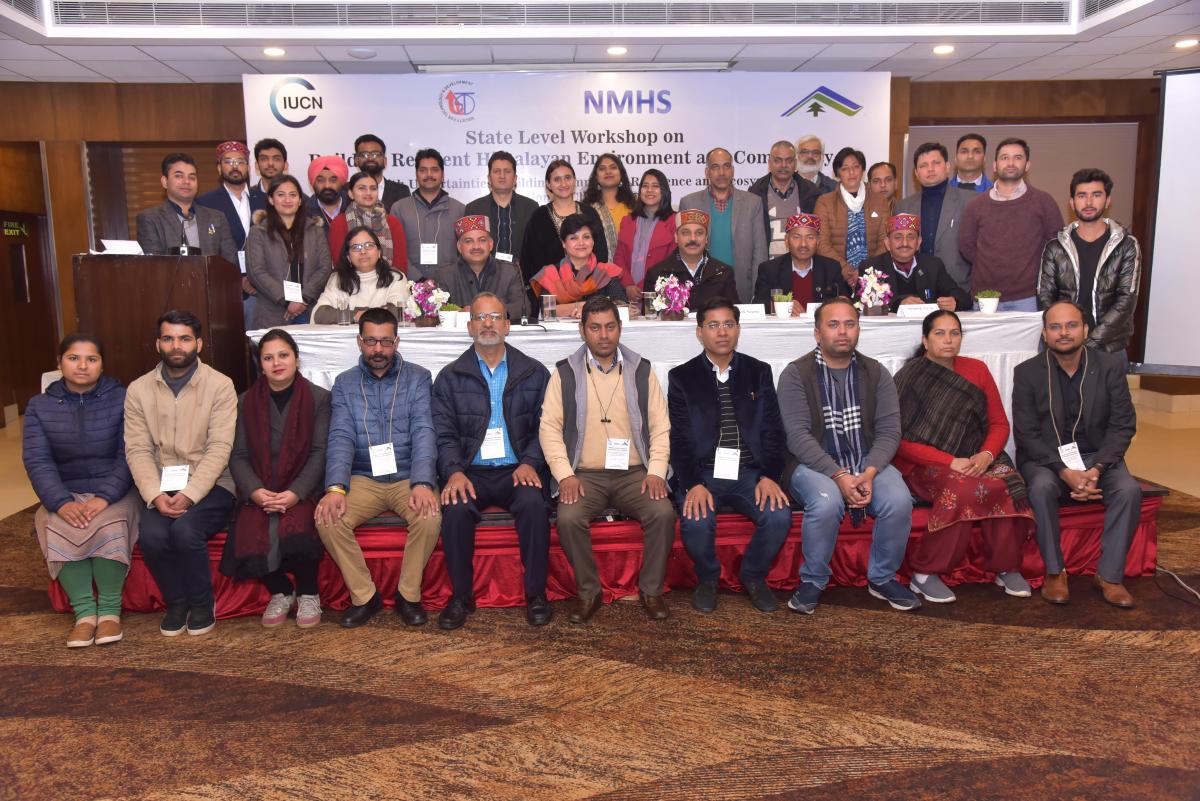World Food Day provides an opportunity to reflect on how ecosystems can contribute to food security
Global food security and climate change are increasingly intertwined. World Food Day gives us an opportunity to discuss the challenges that lie ahead, and offer some solutions.

Photo: IUCN GFCCP
Today, the world is producing more food than ever. In fact, 17% more food is produced per person now than was produced three decades ago[1]. Yet, approximately, one-third of the food around the world is never consumed[2]. For instance, the amount of food that is wasted in Latin America alone could feed about 300 million people[3]. Despite the fact that the world produces enough food, 795 million people worldwide remain hungry. Current global concerns tend to be directed toward producing enough food whereas addressing food consumption patterns and food losses are equally important. The sustainability of food systems simultaneously needs to address both food consumption and production in a resource constrained world. On October 16th, World Food Day 2016 (WFD), promoted by the Food and Agriculture Organization of the United Nations (FAO) and partner organizations will highlight the needs for the sustainable use of natural resources and reducing food losses. The theme of Climate is changing. Food and agriculture must too, is dedicated to addressing how agricultural and food systems need to adapt to climate change in order to sustainably feed an estimated 9.6 billion people in 2050.
Climate change impacts food production systems in different ways. For example, a decrease in rainfall and higher temperatures directly impact the quality and quantity of major crops which can put people at risk of hunger and malnutrition. This is especially relevant to poor families dependent on their own food production. The undermining problem is that many of the poorest households do not have sufficient land and resources to grow enough food, or have the purchasing power to access adequate food, to maintain daily calorie intake. Poverty is a clear indicator of hunger. But poverty is often the result of unresolved global challenges – whether conflict, sluggish economic development, climate change, rising food prices, overharvested ecosystems or weather-induced disasters – that underlie economic growth and development. These challenges must be addressed to foster global sustainability and ensure food security.
Leading up to World Food Day, FAO Geneva is organizing an expert panel discussion in collaboration with the World Food Programme and the International Federation of Red Cross and Red Crescent Societies. Discussions will focus on adaptation strategies to climate change in the areas of the forestry, agriculture, livestock management, food loss and waste, natural resources, fisheries and food systems. As a member of the panel, IUCN will specifically discuss nature-based solutions, the actions to protect, manage, and restore ecosystems, which address societal challenges (e.g. climate change, food and water security or natural disasters) effectively and adaptively, providing human wellbeing and biodiversity benefits.
We have seen cases of increasing droughts and flooding as a result of climate change in parts of the world that are already severely food insecure. If the world becomes warmer than the current trend by 2050, declines in crop yields will be further exacerbated. Increased water scarcity will limit the ability of farmers to expand and intensify food production.
Is there a solution?
Nature-based solutions such as forest landscape restoration (FLR) can be applied in an integrated manner at a landscape scale to yield ecosystem benefits for stakeholders at the farm, sub-national, national and at broader landscape levels. FLR has been implemented around the world in places where challenges and opportunities call for simultaneously increasing food production, improving livelihoods, and protecting biodiversity and ecosystem services. FLR brings solutions to ecosystems and global food security issues by enhancing the generation of goods and services such as income from timber and non-timber forest products, medicines, reducing soil erosion, improving wildlife habitat, and providing firewood and forest foods during lean seasons and at times of crop failure, regulating water flows, protecting coastal areas and removing carbon from the atmosphere.
There are many complicated challenges associated with climate change and food security, and there isn’t a single answer to these challenges. However, FLR is, in some cases, a viable nature-based solution.
More on the links between FLR and food security next week.
[1] http://www.fao.org/docrep/003/y6265e/y6265e03.htm
[2] http://www.fao.org/save-food/resources/keyfindings/en/
[3] http://www.fao.org/save-food/resources/keyfindings/en/



